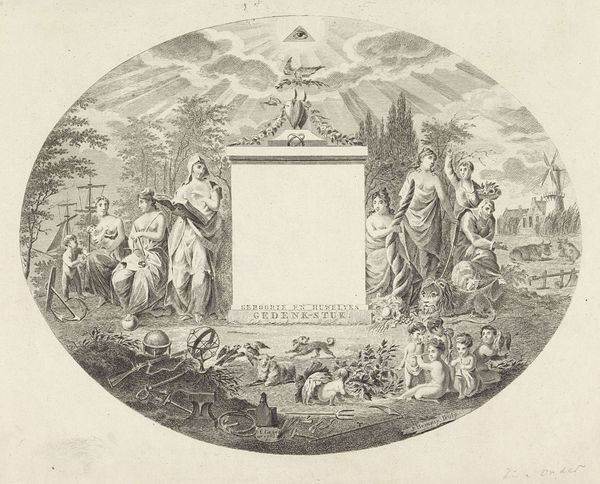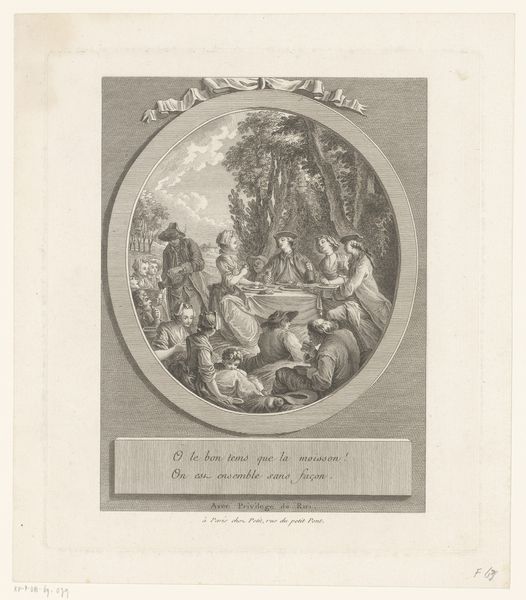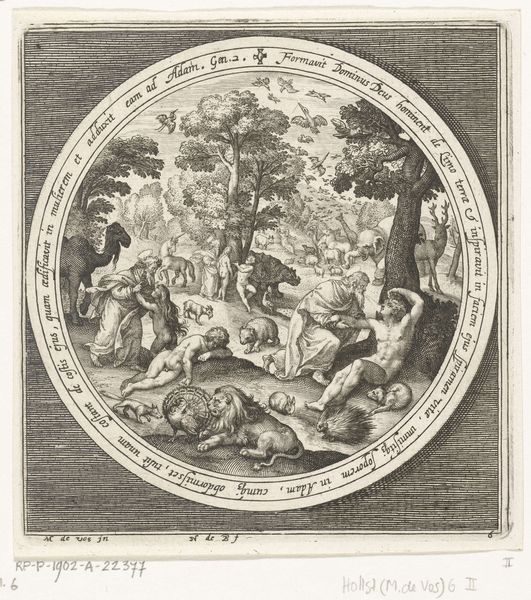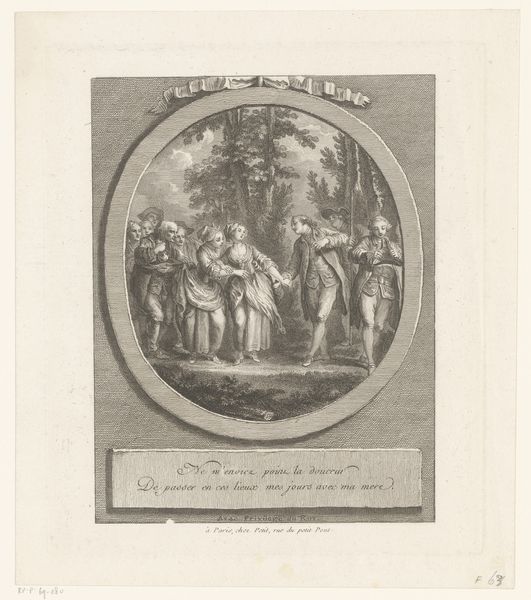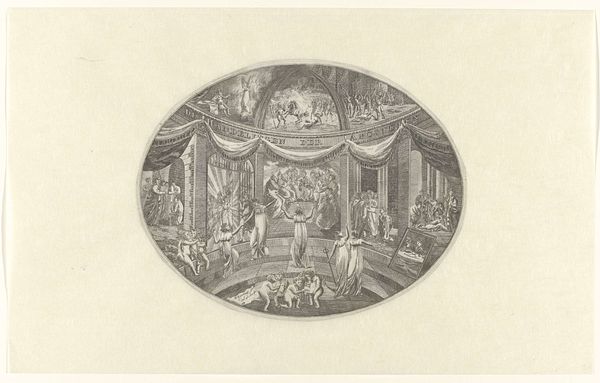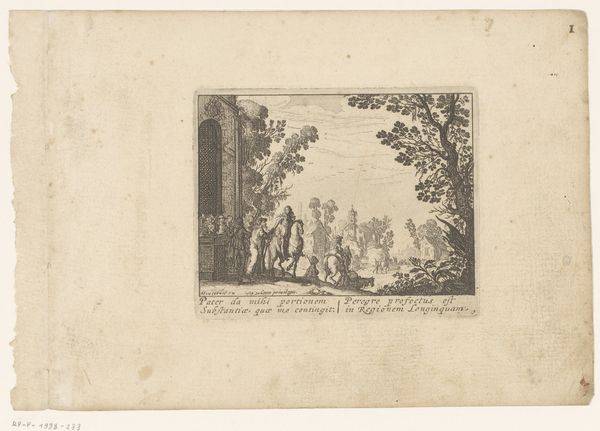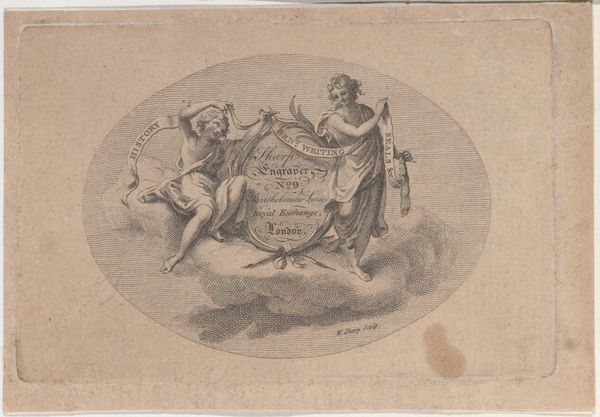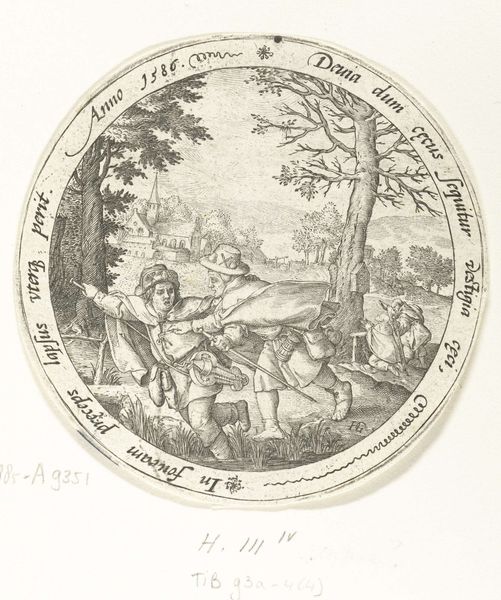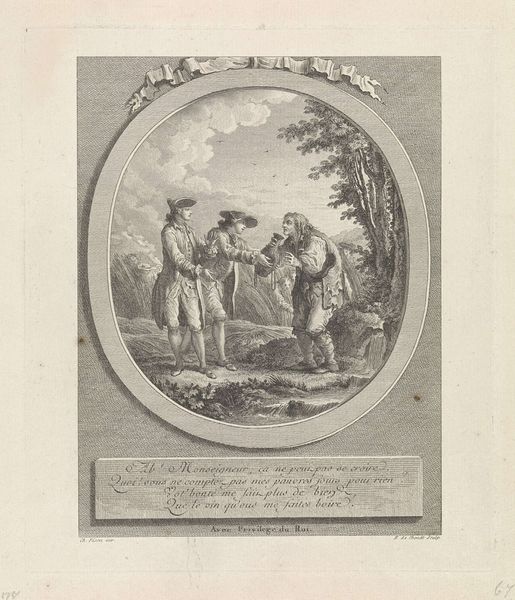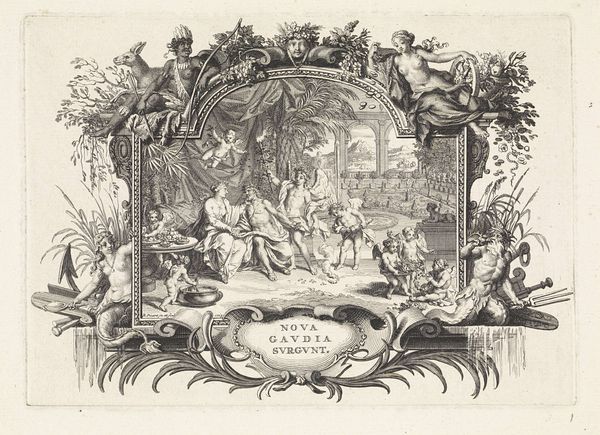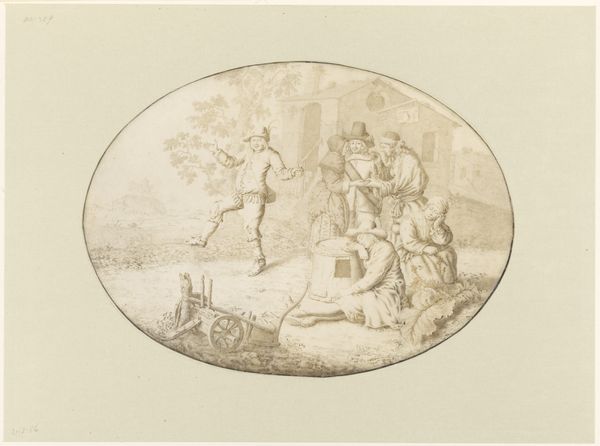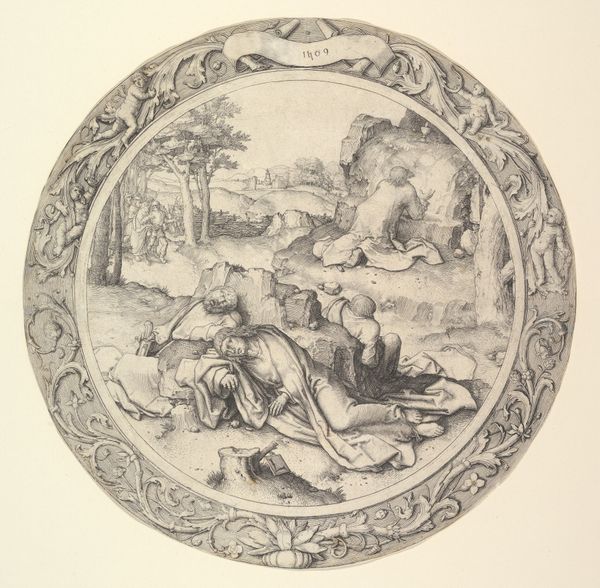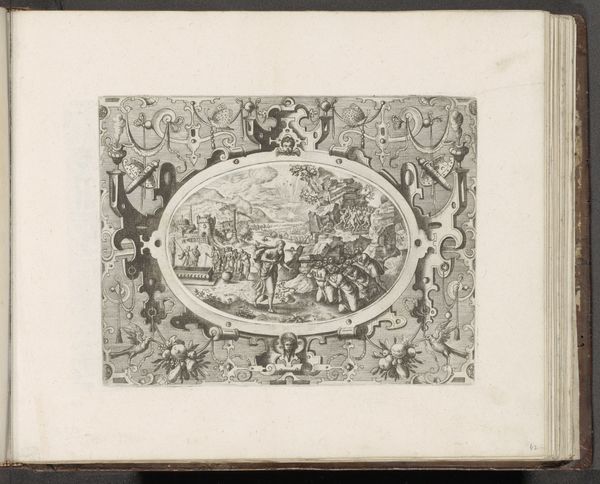
print, engraving
#
allegory
# print
#
landscape
#
geometric
#
classicism
#
history-painting
#
engraving
Dimensions: height 183 mm, width 233 mm
Copyright: Rijks Museum: Open Domain
Curator: Right, let's dive into this fascinating print at the Rijksmuseum. It’s called “Geboorte en huwelijks gedenk-stuk,” roughly translating to “Birth and Marriage Memento". Made sometime between 1800 and 1841, the piece is credited to Joannes Bemme. Editor: Wow, it feels incredibly symbolic. It's packed! So much is going on—there's an almost overwhelming feeling to it, like stepping into a very complex dream. Is the emptiness at the heart of the piece deliberate, almost a place for projection? Curator: Precisely! It's meant to hold specific details of the birth and marriage being commemorated. It merges history painting and allegorical themes with precision. You see those figures representing virtues and aspects of life - the domestic sphere and knowledge with books and globes at left versus rural happiness, with a glimpse of a distant windmill. Editor: Those classical figures, I like them. But I find myself immediately drawn to that eye at the very top. That classic 'all-seeing eye' gazing down upon everything. How does it resonate within this memento of birth and marriage? Is it providence, destiny, or judgment? Curator: That's an insightful point. The all-seeing eye is the representation of God overseeing earthly events. Considering this work dates from the rise of Classicism and Neoclassicism, the engraver draws heavily from the visual vocabulary that connects spirituality, philosophy, and moral rectitude. The overall oval format, for instance, feels significant too—almost encompassing the entire world and cosmos within. Editor: And the symbols continue—anchors for hope, cornucopias overflowing with abundance...The intention feels clear. And yet it leaves room to question, if birth and marriage are idealized and sanctified, who really gets to participate in that dream? What realities are being erased by all these pretty emblems? It’s powerful food for thought. Curator: It does prompt questions, doesn’t it? Visual communication invites not only reflection but interrogation, too. To revisit our first impressions, that initial overwhelming feeling is actually layered. Now when I look at it again, my eyes see individual people in a vast network and landscape, as though both an individual is meant for community, and community must acknowledge an individual’s existence.
Comments
No comments
Be the first to comment and join the conversation on the ultimate creative platform.
